mobile View, to the German Version tap the flag


- parliamentary republic
- own name: Magyarország
• Flags
• Unofficial Flags
• Historical Flags and Coats of Arms from the proto-heraldry to 19th century
• Historical Flags - Austria-Hungary
• Historical Flags from 1919
• Meaning/Origin of the Flag
• Coat of Arms
• Historical Coats of Arms
• Meaning/Origin of the Coat of Arms
• Aircraft Roundel
• Map
• Numbers and Facts
• History
• Origin of the Country's Name
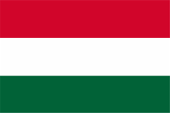
National and merchant flag,
ratio = 2:3,
Source, by: Wikipedia (D)





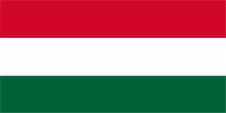
State flag,
ratio = 1:2,
Source, by: Wikipedia (D)



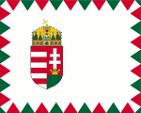
War flag,
ratio = 3:4,
Source, by: Flags of the World



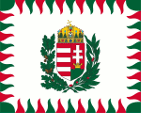
Military unit colour,
ratio = 3:4,
Source, by: Flags of the World




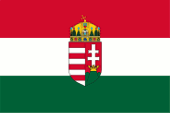
unofficial national flag,
ratio = 2:3,
Source, by: Foto, news.cgtn.com



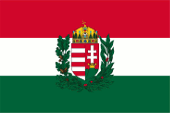
unofficial national flag,
ratio = 2:3,
Source, by: Foto, www.gettyimages.ch





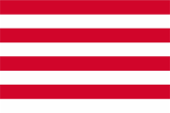
"Arpad Flag",
unofficial national flag
ratio = 2:3,
Source, by: Foto, www.alamy.com




Rectangular flags, as we know them today, are mostly products of modern times. In the middle ages, flags were often shaped differently, showed the shape of a coat of arms, were square or wore tails. They symbolized no nation, but showed the image of the ruler's coat of arms on a flag-cloth. As well as in Hungary.

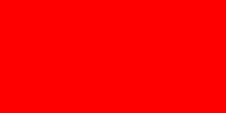
10th century,
Prince Arpad,
in modern shape
Source, by: Flaggen Wappen Hymnen



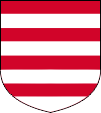

9th century to 1301,
Arpad Dynasty,
in modern shape,
Source, by: Flags of the World




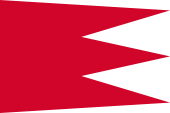
11th century,
King Stephen,
in modern shape,
Source, by: Flags of the World



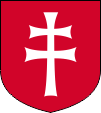
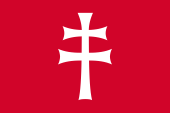
from ca. 1172,
King Bela III.,
in modern shape,
Source, by: Flags of the World



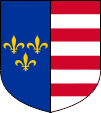
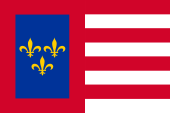
1301–1382,
House of Anjou,
in modern shape,
Source, by: Flags of the World



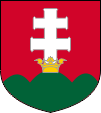
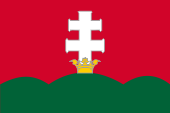
14th century,
Hungary,
in modern shape,
Source, by: Wikipedia (D)



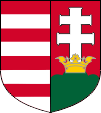
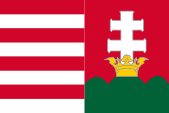
15th-17th century,
Hungary,
in modern shape,
Source, by: Wikipedia (D)





18th century,
Hungary,
Source, by: Flaggen und Coat of arms of the Welt





1848/1849,
Republic of Hungary,
Source, by: Wikipedia (D)





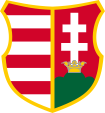
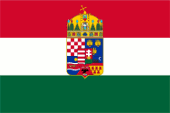
1867–1908,
Kingdom of Hungary,
ratio = 2:3 (?),
Source, by: Wikipedia (D)



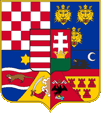
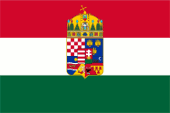
1908–1918,
Kingdom of Hungary,
ratio = 2:3,
Source, by: Wikipedia (D)




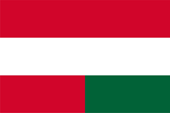
1869–1918, Austria-Hungary,
national Colours,
ratio = 2:3,
Source, by: World Statesmen




1908–1918, Kingdom of Hungary,
Flag of the Kingdom of Hungary,
ratio = 2:3,
Source, by: Wikipedia (D)



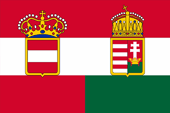
1869–1918, Austria-Hungary,
Merchant flag,
ratio = 2:3,
Source, by: Flags of the World



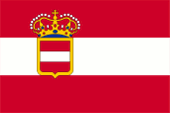
1894–1915, Austria-Hungary,
Naval and war flag,
ratio = 2:3,
Source, by: Flaggenbuch, Reichs-Marine-Amt, Berlin, 1905
via: zeljko-heimer-fame.from.hr





1918–1949,
National flag,
ratio = 2:3,
Source, by: World Statesmen






1919–1944,
State flag,
ratio = 2:3,
Source, by: Jürgen Kaltschmitt



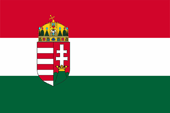
1919–1944,
Merchant flag,
ratio = 2:3,
Source, by: Jürgen Kaltschmitt



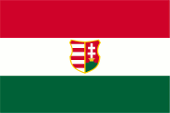
1946–1949,
State flag,
ratio = 2:3,
Source, by: Jürgen Kaltschmitt



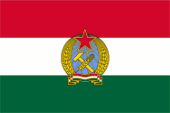
1949–1956,
National, state and merchant flag,
ratio = 2:3,
Source, by: Jürgen Kaltschmitt




The flag of Hungary shows three horizontal stripes in red, white and green. It was hoisted in the today’s shape for the first time in the 19th century. In its today's function as nataional, state (official) and national flag it was hoisted first on 1st of October in 1957. A regulation or enactment from the year 2000 lays down a ratio of 1:2 for official flags (state flags). The national and merchant flag remained at 2:3. The shades of the colours of the flag are defined, most recently by the MSZ 1361:2009 regulation, which specifies: Pantone TCX 18-1660 Tomato - Hex #CE2939 - for red and Pantone TCX 18-6320 - Hex #477050 for green. The following Pantone colours can be derived from the hex values: Red = Pantone 711 C, Green = Pantone 626 C. The colours of the flag are today interpreted as follows: White stands for purity, green for hope and red for the in the fight for freedom given blood.
The colour red has its roots in the banners of Prince Árpád (9th cent.), who lead the Hungarians into their today’s homeland in the year 895. The white goes back to a Byzantine double cross, which was given to the Hungarian King Bela III. by the emperor of Byzantium. The colors red and white in eight stripes are also considered as the colors of the Arpadian Dynasty but they are partly a legend. Proven for the first time they are on a document of king Emmerich (1196–1204). They should ostensibly embody the four rivers Donau, Theis, Save and Drau. This pattern became later transfered to the region Lower Hungary (Old Hungary, the today’s Hungary). The colour green has its roots in the coat of arms of King Bela (1061–1063), who used a scutcheon which showed a green triple-mountain on a red shield an on it a white double-cross. The small crown at the foot of the cross was added not until the 17th century. That coat of arms became later transfered to the region Upper Hungary (New Hungary, the today’s Slovakia). The three mountains represent since the 17th century, the mountains Tatra, Matra and Fatra.
Under the reign of Maria Theresa, from 1740 to 1780, Queen of Hungary and Bohemia, Archduchess of Austria and German Empress, was the use of flags of the Upper Hungarian heraldry allowed. In 1848, the year of revolutions, many flags were created on the French model as a tri-colored flag. This is also the current Hungarian flag with the three stripes in red, white and green. These three colors had allegedly showed the tape, which held the seal of King Andrew II in a deed from the year 1222. With the Austria-Hungaryn compensation and the creation of the Austria-Hungaryn dual monarchy (1867), the Hungarian colors had been used in the flying part of the national flag and the trade flag of Austria-Hungary. The red-white-green flag was adoped on the occasion of the independence and proclamation of the Republic on 16th of November in 1918. After the fall of Admiral Horthy, forced by German troops in March 1944, the coat of arms was changed in 1945. After the war, the Tildy government reintroduced the coat of arms of Kossuth (without crown). It was created in 1848. After the Communist seizure of power in connection with the occupation of Hungary by Soviet troops during World War II, the People's Republic of Hungary was proclaimed on 18th of August in 1949, and a new flag was introduced. It showed a new coat of arms with communist symbolism. In 1956 there was an anti-communist uprising. During the uprising, flags were used that had a hole in the middle. The communist coat of arms had been cut out of them. Flags with the coat of arms had also been divided vertically, and only the elements without the coat of arms were sewn together again. After the uprising was introduced a new coat of arms on 1st of October in 1957, but it was not in use on the flag until the end of communism in the year 1989.
Source:
Flags of the World,
Wikipedia (D),
Die Welt der Flaggen,
Flaggen Wappen Hymnen,
Flaggen und Coat of arms of the Welt,
Flaggen Enzyklopädie,
Flaggen-Atlas Erde,
Jürgen Kaltschmitt


Coat of arms of Hungary,
Source, by: Tibor Piros,
Public domain, via Wikimedia Commons

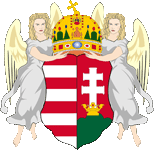
1867–1918,
lesser Coat of arms of Hungary
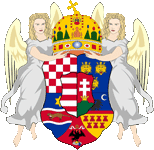
1867–1908,
greater Coat of arms of Hungary
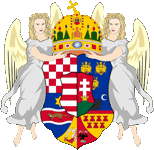
1908–1918,
greater Coat of arms of Hungary

1918–1944,
Coat of arms of Hungary under Horthy,
Source, by: Tibor Piros,
Public domain, via Wikimedia Commons
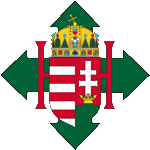
1945,
Coat of arms of Hungary under Szálasi,
Source, by: Jürgen Kaltschmitt

1946–1949,
Coat of arms of Hungary under Tildy,
Source, by: Jürgen Kaltschmitt
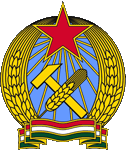
1949–1957,
Coat of arms of Hungary,
Source, by: By Thommy [CC0 or Public domain],
via Wikimedia Commons

1956,
Badge on vehicles and equipment of the Hungarian troops who were involved in the anti-communist uprising,
Source, by: Jürgen Kaltschmitt
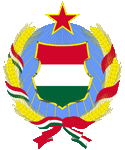
1957–1989,
Coat of arms of Hungary,
Source, by: Corel Draw 4

The current coat of arms of Hungary was introduced on 3rd of July in 1990, according to other sources on 11th of July in 1990. It shows a divided shield, left the Lower Hungarian heraldry (Old Hungary, the today's Hungary), an eight-times red and white striped field, and to the right the heraldry of Upper Hungary (New Hungary, today's Slovakia). Above it the Stephan's crown. In this form, it was first depicted in 1464, at the time of King Mattias Corvinius from the House of Hunyadi. In 1699, Hungary became a Habsburg crown land. A few years later, the bisected shield reappeared on flags of the insurgent Prince Rákóczi II. From the middle of the 18th century, the Habsburgs permitted the use of the double cross with the triple-mountain. The bisected shield became officially again only in 1848/49, at the time of the Republic of Hungary. After the compensation (1867) it was officially taken over for the Hungarian part of the empire and maintained until 1918. From March 1920, the coat of arms was officially adopted again for the now independent Hungary. Between 1944 and 1949, the Crown of St. Stephen was removed from the coat of arms and in 1949 the whole the coat of arms was abolished. In 1956 it reappeared shortly during the anti-communist uprising, and after the communist era, it was again adopted again – with the Crown of St. Stephen – as the coat of arms of Hungary, from July 1990.
The colour red has its roots in the banners of Prince Árpád (9th cent.), who lead the Hungarians into their today’s homeland in the year 895. The Byzantine double cross goes back to the Hungarian King Bela III. It was awarded to him by the emperor of Byzantium. The colors red and white in eight stripes are also considered as the colors of the Arpadian Dynasty but they are partly a legend. Proven for the first time they are on a document of king Emmerich (1196–1204). They should ostensibly embody the four rivers Donau, Theis, Save and Drau. This pattern became later transfered to the region Lower Hungary (Old Hungary, the today’s Hungary). The green triple-mountain has its roots in the coat of arms of King Bela (1061–1063), who used a scutcheon which showed it on a red shield an on it the white double-cross. The small crown at the foot of the cross was added not until the 17th century. That coat of arms became later transfered to the region Upper Hungary (New Hungary, the today’s Slovakia). The three mountains represent since the 17th century, the mountains Tatra, Matra and Fatra. These two elements, the red-and-white striped field and the double cross with the triple-mountain represented over the centuries the heraldry of Hungary, either individually, or on one shield united, or also supplemented by the heraldry of the ruling dynasty.
Under the reign of Maria Theresa, from 1740 to 1780, Queen of Hungary and Bohemia, Archduchess of Austria and German Empress, was the use of flags of the Upper Hungarian heraldry allowed. The greater coat of arms of the Kingdom of Hungary showed from 1867 in a multiple shared shield the heraldry of the crown's lands of the empire (Croatia, Dalmatia, Slavonia, Transylvania and Fiume, also Bosnia from 1908) and in the center the Hungarian heart shield. With the end of the Habsburg monarchy, Hungary gained its independence, but it lost all of his crown's lands, so that the shield showed only the heraldry of Upper and Lower Hungary although Upper Hungary (Slovakia) became part of Czechoslovakia. After the fall of Admiral Horthy, forced by German troops in March 1944, the coat of arms was changed in 1945. After the war, the Tildy government reintroduced the coat of arms of Kossuth (without crown). It was created in 1848, named after the revolutionar Lajos Kossuth, who wanted to lead Hungary into freedom in the years 1848/1849. After the Communist seizure of power in connection with the occupation of Hungary by Soviet troops during World War II, the People's Republic of Hungary was proclaimed on 18th of August in 1949, and a new flag was introduced. It showed a new coat of arms with communist symbolism. It showed an ear and an hammer over cross, beneath a red star on a blue background, surrounded by wheat ears. After the anti-communist uprising in 1956 was adopted a new coat of arms on 1st of October in 1957. It showed a shield with the colours of Hungary below a red star on a blue background, surrounded by wheat ears, hold together with bands in the Hungarian colors. With the end of communism in Hungary this coat of arms was abolished, and they returned back to the old heraldry.
Source:
Wikipedia (D),
Die Welt der Flaggen,
Flaggen Wappen Hymnen,
Flaggen und Coat of arms of the Welt,
Jürgen Kaltschmitt

Supported by the German Emperor Otto III, the Hungarian Prince Stephan had successfully appealed to Pope Silvester II., with the wish for the King's dignity. In this way Hungary was formally given by the prince to the Pope, who handed it back to (the henceforth) King Stephen I. as kingdom and papal fiefdom. For this purpose he was crowned in the year 1000 with a crown sent by the Pope and to him was given the title 'Apostolic Majesty'. This crown, the real Stephen's Crown (so called in Hungary until today), was lost in the year 1074 in Austria. What it looked like is not passed down. One suspects a simple ripe or spiked crown without a bow. The oldest depiction of it dates back to the 15th century, and it will already have been a product of conjecture. That crown, which adorns the today's coat of arms of Hungary, is known in the German language area as 'Stephanskrone' (Crown of Saint Stephen). In Hungary, it is called the 'Holy Crown'.

It was built between the 11th and 13th centuries, probably by Byzantine model, has a temple, lateral pendants (jewelry chains) and decorative plates. In 1464 it was first minted on coins, together with the bisected Hungarian coat of arms.
Source: Jürgen Kaltschmitt

The year 1848 was the 'year of the revolutions', there were roits and uprisings almost everywhere in Europe, not only in France or Germany, no, also in Hungary. There the revolutionary Lajos Kossuth wanted to lead the Hungarians to freedom. The Habsburgs, whose empire began to burn in some corners, called Russian troops into the country for help. In 1849 the Hungarian Revolutionary Army had to surrender to the Imperial Russian troops at Vilagos/Hellburg/Sina. The Hungarian flags were captured there and were brought to Russia and kept there.
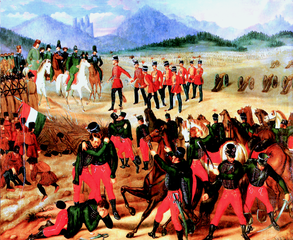
Surrender of the Hungarian army in Világos, August 13th 1849
Source: István Szkicsák-Klinovszky (1820 – c. 1880),
Public domain, via Wikimedia Commons, click/tip to enlarge
In 1940, Stalin proposed an exchange deal to Admiral Horthy: the Kingdom of Hungary releases the imprisoned Hungarian communist functionary Màtàs Ràkosi ("Stalin's best student", 1956 "Stalin's worst bloodhound 1956") and lets him emigrate to the Soviet Union. In return, the Soviet Union gives the – still existing – flags of the Hungarian Revolutionary Army from 1848/49 back to the Kingdom of Hungary, which then happened on both sides. In 1945/46, after the Red Army had conquered and occupied Hungary during the Second World War, the captured flags were brought back to (Soviet) Russia. In 1948, on the occasion of the 100th anniversary of the Hungarian revolution, the Soviets returned at least a part of the Hungarian 48s revolutionary flags to the now Republic of Hungary. After the brutal suppression of the uprising of the Hungarian people in October 1956 the Kossuth flags are said to have been brought back to the Soviet Union and have been returned to the (People's) Republic of Hungary again in the 1960s.
Source: Jürgen Kaltschmitt

Since the spring of 1943, Hungary had stretched out peace feelers in the direction of the western allies, something that was not hidden from the German secret services. On 18th of March in 1944, Adolf Hitler made it clear to Admiral Horthy that resistance would be pointless if the German Wehrmacht were to move into Hungary to secure the Eastern Front. This took place on 19th of March in 1944 as "Unternehmen Margarethe". This was greeted "with relief" by both the Hungarian army and the civilian population. The excesses under Béla Kun, the leader of the Hungarian Soviet Republic (21st of March 1919 to 1st of August in 1919), the so-called "Red Terror", were not forgotten. Formally, Horthy remained in office, and a new government was appointed that would please the Germans. In August 1944 Romania switched sides. On 15th of October in 1944, an armistice was announced between the Horthy government and the Soviets. Thereupon Horthy was arrested and interned on the territory of the German Empire. On 16th of October in 1944, German troops and the militia of the Hungarist Arrow-Crossers put on a coup in Budapest ("Unternehmen Panzerfaust"), Ferenc Szálasi was appointed as head of state and the "State of Hungary" was proclaimed. The seat of the government was soon relocated to Güns/Köszeg. A new coat of arms for the Hungarian state was introduced on 1st of January in 1945: the traditional coat of arms with the St. Stephen's crown on top covered a large, red "H" (Hungarism) and this in turn was covered by a green cross of arrows. The state seal was changed accordingly. This new state coat of arms / state seal remained in pure theory, because until 4th of April in 1945 whole Hungary was occupied by the Red Army. On 16th of October in 1944 the Hungarian Colonel General Béla Miklós deserted to the Soviet lines. As a result, he proclaimed the "State of Hungary" in Debrecen, the provisional seat of his opposing government. He became Prime Minister of an Allied-Soviet-friendly cabinet. They saw themselves as a royal Hungarian government with Admiral Horthy as administrator! Apparently, the Hungarian national coat of arms with the St. Stephen's crown remained (initially) untouched, because there is a photo of the politician Zoltán Tildy at the lectern opening a parliamentary session. The lectern is adorned with the national flag, with the well-known coat of arms with an attached St. Stephen's crown. Tildy is flanked by two parliament guards in hussar uniform. Usually only the kings of Hungary, Admiral Horthy and Ferenc Szalasi, had such a guard as heads of state. On 1st of February in 1946, following elections, the Republic of Hungary under Zoltán Tildy was proclaimed, and the Kossuth coat of arms (= without crown) from 1848 was reintroduced. In 1948 they celebrated 100 years of the Hungarian Revolution and there is a photo of the grandstand with Hungarian and Soviet officials under the Kossuth coat of arms. Finally, on 20th of August in 1949, Hungary became a People's Republic and introduced the notorious "Coat of arms of Ràkosi" as a state emblem.
Source: Jürgen Kaltschmitt

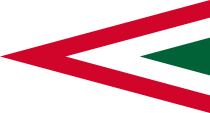
since 1991,
Aircraft Roundel,
Source, by: Wikipedia (EN)
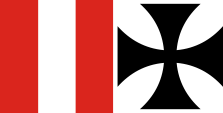
1914–1916, Austria-Hungary,
Aircraft Roundel,
Source, by: Wikipedia (EN)
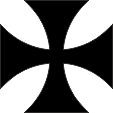
1917–1918, Austria-Hungary,
Aircraft Roundel,
Source, by: Wikipedia (EN)
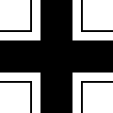
1918, Austria-Hungary,
Aircraft Roundel,
Source, by: Wikipedia (DE)
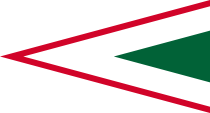
1938–1941,
Aircraft Roundel,
Source, by: Wikipedia (EN)

1942–1945,
Aircraft Roundel,
Source, by: Wikipedia (EN)
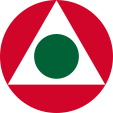
1948–1949,
Aircraft Roundel,
Source, by: Wikipedia (EN)
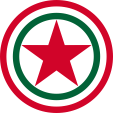
1949–1951,
Aircraft Roundel,
Source, by: Wikipedia (EN)
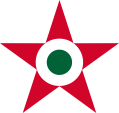
1951–1990,
Aircraft Roundel,
Source, by: Wikipedia (EN)
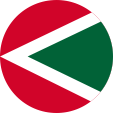
1990–1991,
Aircraft Roundel,
Source, by: Wikipedia (EN)

Location:
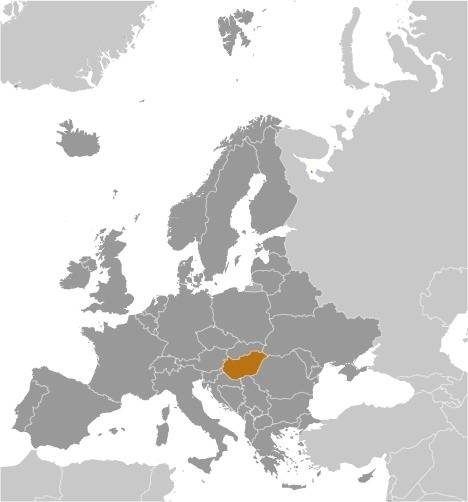
Source: CIA World Factbook
Map of the country:
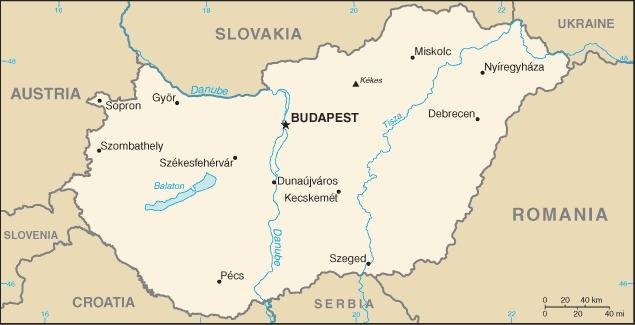
Source: CIA World Factbook
interaktive Map of Austria-Hungary, ca. 1910:
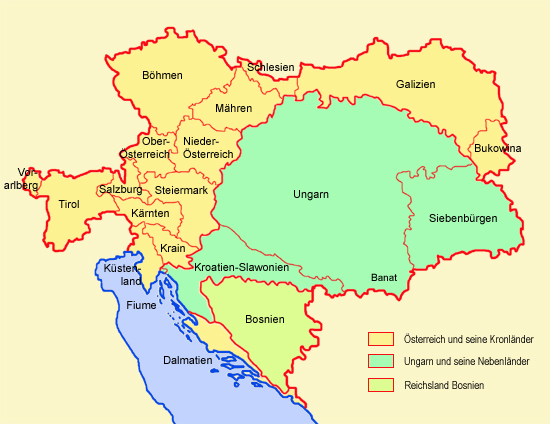
Source: Volker Preuß

Area: 35.921 square miles
Inhabitants: 9.599.744 (2023), thereof 92% Hungarians, 2% Gipsies, 0,6% Germans, 0,2% Slovaks, 0,15% Croats, also Romanians, Ukrainians, Serbs and others
Religions: 39% Catholic, 12% Calvinists, 2% Protestant, 18% Non-Religious
Density of Population: 267 inh./sq.mi.
Capital: Budapest, 1.671.004 inh. (2023)
official Language: Hungarian
other Languages: English, German, French
Currency: 1 Forint (HUF, Ft) = 100 Fillér
Time Zone: GMT + 1 h
Source:
Wikipedia (DE)

9th cent. · Displacement of the nomadic people of the Hungarians from their country (Etelköz, "Land between the Rivers") between the rivers Don and Dnieper by the Pechenegs, settlement under Prince Arpad (895–907) in Pannonia (today's Hungary) on the rivers Theiss and Donau (Danube)
910–955 · raids of the Hungarians in Europe (Balkans, Italy, France, Germany)
955 · battle on the Lechfeld near Augsburg, the Hungarians defeat against the German king Otto the Great, the Hungarian will be settled
972–997 · reign of Prince Gyécsa (Géza), Christianization
1000 · Pope Silvester II. lets Prince Stephan (István) crown to king
1000–1038 · reign of King Stephen I. (István I.)
1090–1110 · annexation of Croatia and Transylvania (Siebenbuergen)
1203 · annexation of Dalmatia
12th cent. · immigration of German settlers
1241–1243 · Mongol Invasion, parts of the country are occupied by the Mongols
1290–1301 · reign of King Andrew III. (last Arpad)
1308 · Charles I. (Károly) of Anjou becomes King of Hungary
1370 · Louis the Great, I. (Lajos), son of Charles, becomes King of Hungary
1382 · death of Ludwig I, the extinction of the dynasty, the crown goes to the fiancé of the eldest daughter of King Louis, the Sigismund from the house of Luxemburg
1396 · Battle of Nikopoli, defeat of the Cross Army (Hungary, France, Moravia, Bavaria, Bohemia) against the advancing Turks
1440–1444 · reign of King Wladyslaw III. (Ulászló I.) from the house of the Jagiellonian
1444 · election of János (John) Hunyadi to Reichsverweser
1458 · election of Matthias I. Corvinus (son of Hunyadi) to the king
1463 · vctory against the Turks
1479 · Peace of Olmuetz, Moravia, Silesia and Lusatia become ceded from Poland to the King Hungary
1485 · conquest of Vienna
1490 · Death of Matthias I. Corvinus, decay of the empire
1490–1526 · Reign of the kings from the House of the Jagiellonian
1526 · Turks battle at Mohács, death of King Ludwig II., Hungary loses its independence, the bulk of the country comes to the Ottoman Empire, the western part comes to Habsburg (Austria), Siebenbuergen becomes (for short times) an independent principality
1683–1699 · Turkish wars, whole of Hungary becomes liberated by the Habsburgs and becomes an Habsburg crown's land
1848/49 · years of revolution in Hungary, election of Lajos Kossuth to the Reichsverweser, proclamation of the Republic of Hungary on 13th of April in 1849, Hungary declares its independence, repression by Austrian and Russian troops, the Hungarian Revolutionary Army surrendered on 18th of August 1849 at Világos
8th of February 1867 · Austrian-Hungarian conciliation, equal right for both parts of the country, nascence of the double monarchy of Austria-Hungary, Austria: consisting of the Austrian crown lands, Hungary: consisting of Hungary itself and its minor countries (Croatia, Transylvania und Slavonia), the House of Habsburg sets in one person the Emperor of Austria and the King of Hungary, establishment of common ministries in foreign affairs, finance and defense
1878 · Berlin Congress, Austria-Hungary acquires Bosnia (including Herzegovina)
1908 · Bosnia becomes affiliated to Austria-Hungary as a Reichsland (empire's country)
28th of June 1914 · assassination of the Austrian throne successor Franz Ferdinand and of his wife, onset of the First World War (1914–1918), the German Empire is thereby an ally of Austria
1st of November 1918 · Hungary's declaration of independence
3rd of November 1918 · ceasefire
13th of November 1918 · Karl IV. (Karl I.), renounces in Hungary temporary for the exertion of his reign, end of the Habsburg monarchy
16th of of November 1918 · Proclamation of the Democratic Republic of Hungary under Prime Minister Mihály Károlyi
21st of March to 1st of August in 1919 · Communist uprising under Béla Kun ('Federal Hungarian Socialist Soviet-Republic')
10th of September 1919 · Peace Treaty of Saint-Germain, Austria recognizes Hungary
1st of March in 1920 · election of Admiral Miklós Horthy to the Reichsverweser, proclamation of the Kingdom of Hungary under the nominal rule of Charles IV. from the house of Habsburg
4th of June 1920 · Treaty of Trianon, Hungary has to cede Slovakia, Transcarpathia, Siebenbuergen (Transylvania), Croatia, Bosnia, Slavonia, Vojvodina, Burgenland and the Banat (75% of its territory, 60% of its population)
21st of March 1921 · deposition of King Charles IV.
1938 · Hungary annexes parts of Slovakia and Transcarpathia
1940 · Hungary annexed Northern Siebenbuergen (Northern Transylvania), Vojvodina and the Banat
1941 · Hungary joins the Second World War on the side of the Axis Powers
15th of October 1944 · Miklós Horthy begins ceasefire negotiations with Soviet troops
16th of October 1944 · occupation of Hungary by German troops, deposition of Admiral Horthy, installation a new government under Ferenc Szálasi (State of Hungary)
1944/1945 · occupation of the country by Soviet troops
21st of December in 1944 · the provisional national assembly elects Béla Miklós in Debrecen with Soviet approval to the Prime Minister of the State of Hungary, whose government is moving to Budapest in February 1945
1st of February 1946 · proclamation of the Republic of Hungary
1947 · Peace Treaty of Paris, re-installation of the borders of 1937, payment of reparations, displacement of a large part of the German population (260.000 people, 53.000 of them become murdered), expropriation of large estates, nationalization of industry
1947–1949 · seizure of power by the Hungarian communists under help of the Soviet occupation army, introduction of a communist single-party-system
20th of August 1949 · proclamation of the Hungarian People's Republic
23rd of October 1956 · anticommunist revolution, seizure of power by Imre Nagy, resignation from the Warsaw Pact, democratization
1st – 4th of November 1956 · oppression of the revolution through five Soviet divisions, hundreds of fatalities, until 1963 execution of 400 insurgents, exodus of 200.000 Hungarians abroad, increasing of the Soviet occupation troops to 100.000 men
since 1963 · gradual liberalization of the economy
19th of August 1989 · official opening of the border barriers to Austria
23rd of October 1989 · proclamation of the Republic of Hungary, multi-party system
25th of March 1990 · elections
1990–1991 · withdrawal of the Soviet occupation army
12th of March 1999 · Hungary is a member of NATO
1st o May 2004 · Hungary joins the European Union
1st of January in 2012 · entry into force of a new constitution, the state is now only called 'Hungary'
Source:
Atlas zur Geschichte,
Wikipedia (D),
World Statesmen,
Discovery '97,
Weltgeschichte,
Volker Preuß

The name "Hungary" goes back to the people of the "Hungarians". The Hungarians call themselves "Magyars", which comes from the Ugric word "Munche" and means "people". According to an other theory, the Magyars called their language "Ugrian", which became Hungarian or Hungarians. The Magyars were one of the seven Hungarian tribes that migrated to Pannonia and united the other tribes under Prince Árpád. The word "Hungarians" comes from the Slavic word "Onogurs", which became "Hungarians" because the Hungarians were mistakenly thought to be Huns. The term "Onogurs" goes back to the Bulgarian-Turkish word "on-ogur", which means "ten tribes".
Source:
Wikipedia (D),
Atlas der wahren Namen,
Handbuch der geographischen Namen


![]()









































































